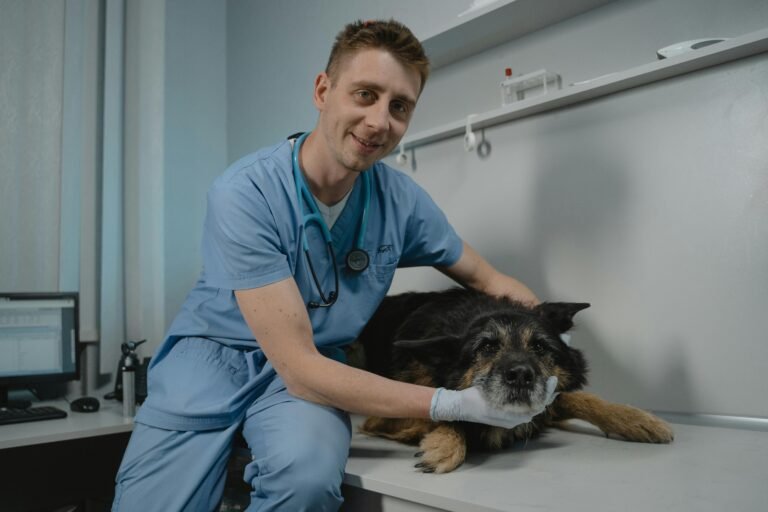Introduction
Your dog’s smile does more than melt hearts—it’s a reflection of their overall health. Yet dental care is one of the most overlooked aspects of pet wellness. Studies show that by age three, more than 80% of dogs have some form of dental disease. While brushing is the gold standard, there are many other ways to protect your pup’s teeth and gums. In this article, we’ll go beyond the toothbrush to explore effective dental care habits, dispel common myths, and highlight when it’s time to call your vet for professional help.
Why Dental Health Matters
Good oral hygiene isn’t just about preventing bad breath—it’s vital to your dog’s long-term health. Plaque and tartar buildup can lead to gingivitis, pain, and tooth loss, but the effects don’t stop there. Bacteria from the mouth can enter the bloodstream and affect the heart, liver, and kidneys. Maintaining clean teeth helps prevent these complications and keeps your dog comfortable and energetic.
Common Dental Problems in Dogs
Recognizing early warning signs allows you to act before problems become painful or expensive:
- Bad breath (halitosis): Persistent odor often signals plaque, tartar, or infection.
- Yellow or brown buildup: Visible tartar along the gumline is a red flag for dental disease.
- Red or bleeding gums: Signs of gingivitis or inflammation.
- Difficulty chewing or eating: May indicate loose teeth or oral pain.
- Pawing at the mouth: Dogs often touch their muzzle when something hurts inside.
- Drooling or dropping food: Could suggest pain or damaged teeth.
Myths About Dog Dental Care
- “Dogs don’t need their teeth brushed.” False—brushing is one of the most effective ways to prevent plaque buildup.
- “Dry food cleans teeth.” While some kibbles help reduce plaque, most don’t replace proper cleaning or chews.
- “Bad breath is normal.” It’s not—consistent odor often points to disease.
- “Dogs naturally keep their teeth clean.” In the wild, chewing bones and rough foods helped—but modern diets require extra care.
Daily Maintenance Tips (Beyond Brushing)
If your dog resists brushing—or if you want to add variety—these options help maintain oral health between cleanings:
- Dental Chews: Vet-approved chews help scrape away plaque and stimulate saliva production.
- Water Additives: Tasteless solutions added to water bowls can help reduce bacteria and freshen breath.
- Dental Sprays and Wipes: Great for dogs who dislike toothbrushes; they clean surfaces and reduce odor.
- Healthy Chewing Toys: Rubber or nylon toys encourage natural cleaning through gnawing. Avoid hard bones or antlers that can crack teeth.
- Diet Choices: Look for dog food with dental benefits or crunchy textures that help minimize buildup.
How to Brush Your Dog’s Teeth Properly
Even though we’re going beyond brushing, regular brushing remains a cornerstone of oral care. Here’s how to make it easy:
- Use a dog-specific toothbrush and toothpaste—never human products.
- Start slow: let your dog lick the toothpaste and get used to the brush.
- Lift the lips gently and brush in small circles, focusing on the outer surfaces of teeth.
- Reward with praise and a small treat afterward.
Brushing a few times a week can make a dramatic difference in dental health.
Professional Dental Cleanings
Even with perfect home care, dogs still need professional cleanings periodically. Veterinarians perform these under anesthesia to clean below the gumline, where plaque can’t be reached at home. They’ll also take dental X-rays to check for hidden decay, abscesses, or bone loss. Most dogs benefit from a cleaning every 1–3 years, depending on age, breed, and oral health.
Small-Breed Dogs: Extra Attention Needed
Smaller dogs like Chihuahuas, Yorkies, and Dachshunds are more prone to dental problems due to crowded teeth and smaller jaws. Regular home care and early vet checkups are essential to avoid premature tooth loss and infection.
Natural and Holistic Support
Some natural approaches can complement dental care (with vet approval):
- Coconut oil: Has mild antibacterial properties—can be applied sparingly to teeth and gums.
- Parsley or mint leaves: Freshen breath naturally when added to meals.
- Raw carrots or apple slices: Help clean teeth gently, but avoid seeds and cores.
Natural remedies are helpful adjuncts, not replacements for proper dental hygiene.
When to See the Vet
If you notice any of these signs, schedule a dental exam right away:
- Bad breath that doesn’t improve with cleaning
- Bleeding gums or pus around teeth
- Swollen face or jaw
- Broken or missing teeth
- Reluctance to eat or chew
Prompt veterinary attention can prevent pain and stop minor dental issues from escalating into systemic infections.
Long-Term Prevention Plan
Consistency is key. Build dental care into your weekly routine:
- Brush or clean teeth at least 3 times per week.
- Use dental chews daily.
- Schedule professional cleanings every 12–24 months.
- Inspect your dog’s mouth weekly for redness, swelling, or odor.
Conclusion
Your dog’s dental health affects far more than their breath—it’s tied to their quality of life and longevity. With a mix of daily care, smart diet choices, and professional attention, you can keep your dog’s teeth strong and their smile bright for years to come. Remember: a clean mouth means a healthier, happier pup—and more reason to smile right back at them.






